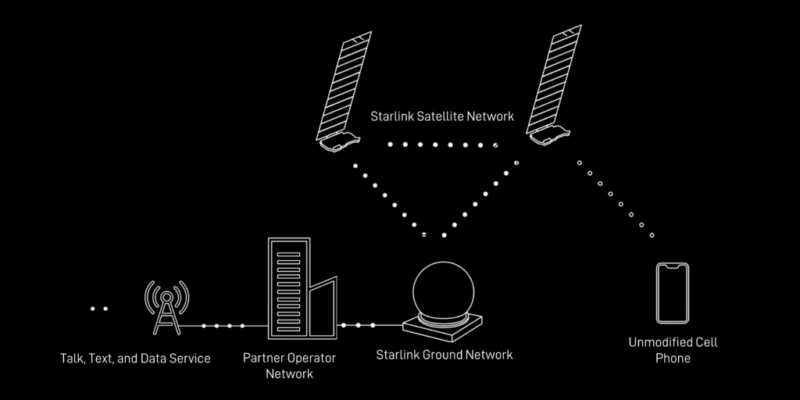SpaceX Aims to Offer Starlink Direct-to-Cell Text Service in 2024, IoT By 2025

Graphic of Starlink’s direct to cell function. Photo: SpaceX
SpaceX is targeting direct-to-cell service that enables text messaging with the Starlink constellation in 2024, and voice and data and IoT service by 2025. SpaceX updated Starlink’s website with a new page focusing on direct-to-cell service.
SpaceX Chief Engineer Elon Musk previously gave the target that Starlink would enter beta service for direct-to-cell with T-Mobile in late 2023. Starlink announced the deal with T-Mobile last year, pitching the service as a way to close gaps in cellular networks in rural and remote areas and allow T-Mobile customers to send messages via Starlink satellites.
Starlink has signed a number of other global cellular providers as partners — Rogers in Canada, Optus in Australia, One NZ in New Zealand, KDDI in Japan, and Salt in Switzerland.
Starlink is encouraging other cellular providers to reach out to use the service to expand their networks. Starlink satellites will use partner spectrum to operate the service over their respective countries.
Explaining the service, the website says that Starlink satellites with direct to cell capability have an onboard eNodeB modem that functions “like a cellphone tower in space, allowing network integration similar to a standard roaming partner.”
SpaceX also said that direct to cell satellites will initially be launched on Falcon 9, then Starship. “On orbit the satellites will immediately connect over laser backhaul to the Starlink constellation to provide global connectivity.”
This confirms that SpaceX plans to offer IoT service as well as text, voice and data over satellite. SpaceX said that direct to cell will connect IoT devices with common LTE standards. Earlier this year when subsidiary Swarm stopped selling new IoT devices, its website said it will eventually offer an LTE version of its modem that is compatible with Starlink’s direct to cell network.
Hat tip to Twitter account @Megaconstellati for noticing the new direct to cell page.